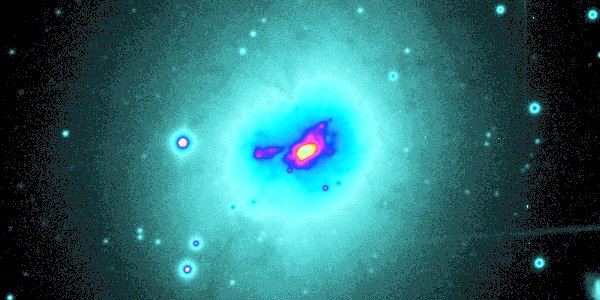A galaxy in transformation

|
|
A galaxy in transformation |

|

The galaxy Henize 2-10 as seen with the Hubble telescope. The colour scale has been adjusted to show the details in the center of the galaxy. Credit: N. Bergvall & T. Marquart.
A team of astronomers from Uppsala and Stockholm has studied how the gas and the stars in the center of the galaxy Henize 2-10 move.
When the universe was young, compact, blue galaxies accounted for a significant part of the star formation at the time. Nowadays, such galaxies are rare, but the few that are present in our proximity are believed to tell much on how today's galaxies once formed.
In an article by Marquart et al., the results of a study of one of these pivotal galaxies, Henize 2-10, are presented. Team members include Kambiz Fathi, Göran Östlin and Robert Cumming from Stockholm Observatory. Using the instrument FLAMES at the Very Large Telescope (VLT) in Chile, they have measured how the gas and the stars move in the center of that galaxy. With instruments like FLAMES, it is now for the first time possible to map the stellar motions in such galaxies. The results show that the young stars in the galaxy's center move in a totally different way than the gas. As opposed to for example our own spiral galaxy, the stars show no signs of orbiting the galaxy's center, and the gas might even be blowing out from there.
According to the researchers, this suggests that Henize 2-10 is the result of a collision between two smaller galaxies. In the future, when its ongoing burst of star formation is over, Henize 2-10 will probably become an elliptical galaxy like for example the Andromeda galaxy's neighbour, M32.
| Contacts: | |
|---|---|
| Robert Cumming | Tel: 08-5537 8542 |